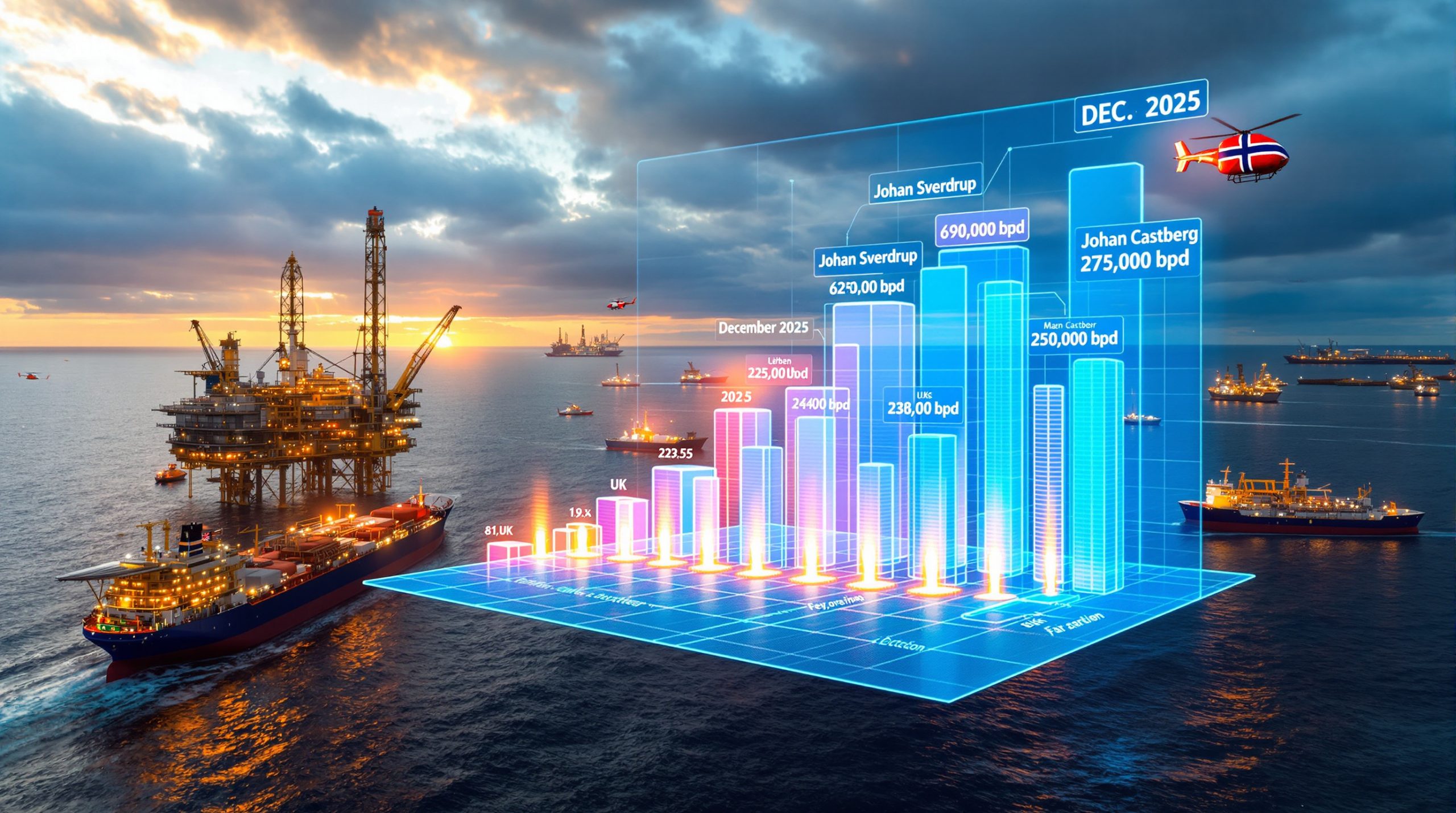Japan's Rare-Earth Seabed Mining Project: World's First Deep-Sea Extraction Planned for 2026
Japan is preparing to embark on a groundbreaking venture in 2026 that could reshape global rare earth supply chains. This pioneering initiative aims to extract valuable rare-earth elements from deep-sea mud deposits, representing the first operation of its kind worldwide. With strategic government backing and cutting-edge technology, Japan seeks to establish domestic rare earth production capabilities to reduce dependence on external suppliers and enhance national security.
The Pioneering Deep-Sea Mining Initiative
Japan's rare-earth seabed mining project targets mineral-rich mud deposits found at extreme depths off Minamitori Island. This government-backed endeavor represents a significant advance in marine resource development and could potentially create a new paradigm for critical minerals & energy security.
The project is scheduled to begin test mining in January 2026, focusing on seabed areas approximately 1,900 kilometers southeast of Tokyo. These operations will target mud deposits located at extraordinary depths of 5,000 to 6,000 meters within Japan's exclusive economic zone (EEZ), pushing the boundaries of deep sea mining companies and their technological capabilities.
Unlike conventional mining ventures, this initiative is being developed primarily as a national security project rather than a commercial enterprise. According to Shoichi Ishii, program director of the Cabinet Office's national platform for innovative ocean developments, "The goal is to secure a domestic supply to enhance national security, rather than to enable private companies to profit from selling rare earths" (Mining Weekly, 2025).
Strategic Importance for Japan's Industrial Future
This deep-sea mining initiative emerges against a backdrop of growing concerns about rare earth supply vulnerabilities, particularly given China's dominant position in global markets.
Reducing Critical Mineral Dependencies
Japan's push into deep-sea mining comes amid increasing anxieties about China's control over global rare earth supply chains. Recent export controls implemented by China have heightened concerns about potential supply disruptions that could significantly impact Japan's manufacturing and technology sectors. With China currently supplying more than 60% of global rare earths, these concerns have strategic implications (USGS, 2024).
These dependencies create significant vulnerabilities for Japan's high-tech manufacturing sector, which relies heavily on rare earth elements for producing everything from electric vehicles to advanced electronics. The seabed mining project represents a strategic initiative to develop indigenous supply alternatives.
National Security Framework
The project forms a critical component of Japan's broader national strategy to strengthen both maritime and economic security. By establishing domestic rare earth production capabilities, Japan aims to insulate its industrial base from geopolitical supply risks that could otherwise compromise national interests.
Ishii explicitly frames the initiative within this security context, noting that securing domestic supply chains for critical minerals represents a strategic imperative rather than merely an economic opportunity (Mining Weekly, 2025).
High-Value Target Materials
The seabed mud being targeted contains several particularly valuable rare earth elements that are essential for advanced industries:
- Dysprosium and neodymium: Critical components in permanent magnets used in electric vehicle motors and wind turbines
- Gadolinium: Utilized in medical imaging technology, nuclear reactors, and electronics
- Terbium: Essential for manufacturing solid-state devices, fuel cells, and specialized lighting
These elements command premium prices in global markets due to their limited availability and rare earth reserves breakdown showing constraints in conventional mining locations.
Technical Approach to Deep-Sea Extraction
The technical challenges of extracting resources from depths of 5,000-6,000 meters are formidable, requiring specialized equipment and methodologies that few organizations worldwide have successfully deployed.
Extraction Technology and Methodology
The extraction process will utilize specialized pipes deployed from a deep-sea exploration vessel operated by the Japan Agency for Marine-Earth Science and Technology (JAMSTEC). These pipes must withstand extreme pressures while efficiently drawing up the rare-earth-rich mud from the ocean floor.
JAMSTEC's vessel serves as the primary extraction platform, housing the specialized equipment needed to operate at these extraordinary depths. The technical specifications of these systems remain proprietary, but they represent significant advances in deep-sea resource extraction capabilities.
Analysis and Processing Approach
Once extracted, the mud will undergo preliminary processing aboard the vessel before being transported to mainland Japan. There, comprehensive analysis will determine precise rare earth content and guide the development of optimal processing methods for separating the valuable elements from surrounding materials.
This analytical phase is crucial, as the economic viability of the entire operation depends on developing efficient separation techniques that can extract rare earths from seabed mud at commercially viable rates.
Operational Scaling Strategy
The project follows a carefully structured development pathway:
- Initial test phase (January 2026): Proof-of-concept extraction to validate technical feasibility
- Trial operations (January 2027): Scaled system aiming to recover approximately 350 metric tons of mud per day
- Potential full-scale operations: Contingent on successful trials and economic analysis
This phased approach allows for technical refinement while minimizing initial investment risks. The planned recovery of 350 metric tons daily during trial operations represents a significant operational scale-up that will test both extraction and processing systems under real-world conditions (Mining Weekly, 2025).
Challenges and Critical Considerations
Despite its strategic importance, Japan's deep-sea mining venture faces several significant hurdles that will require careful navigation.
Environmental Impact Assessment
Operating at extreme ocean depths raises important environmental questions that the project must address. Deep-sea ecosystems at 5,000-6,000 meters remain among the least studied on Earth, with potentially unique and fragile biological communities.
Key environmental considerations include:
- Potential disruption to seabed habitats during extraction
- Effects of sediment plumes on surrounding ecosystems
- Impacts of noise and light pollution on deep-sea species
- Long-term recovery prospects for disturbed areas
While the Mining Weekly article doesn't specifically address environmental protocols, any responsible operation would require comprehensive environmental monitoring and mine reclamation innovations to minimize ecological impacts.
Technical Feasibility at Extreme Depths
The technical challenges of operating at depths of 5,000-6,000 meters exceed those faced by most commercial underwater operations. For perspective, most existing deep-sea mining proposals target depths of less than 2,000 meters.
At these extreme depths, equipment must contend with:
- Pressures exceeding 500 atmospheres
- Near-freezing temperatures
- Complete darkness
- Limited communication capabilities
- Significant operational delays due to transit times
These conditions necessitate specialized equipment with extraordinary durability and reliability, as maintenance or repairs at such depths are exceptionally difficult and costly.
Economic Viability Assessment
Although the project is government-funded with national security as its primary objective, long-term sustainability will depend on economic factors. The cost-benefit equation must account for:
- Extraction costs at extreme depths (equipment, energy, vessel operations)
- Transportation expenses to mainland facilities
- Processing costs to separate rare earths from mud
- Market values of recovered elements
- Competition from conventional mining operations
Expert Perspective: "Deep-sea mining operations face a difficult economic equation. While seabed deposits may contain higher concentrations of valuable elements than terrestrial sources, the technical challenges of extraction at extreme depths significantly impact overall costs. The economic viability hinges on processing efficiency and the market value of target materials." – Mining industry perspective
Potential Global Implications
Japan's seabed mining initiative has significance extending far beyond its national borders, potentially influencing global resource policies and technologies.
Establishing International Precedents
As the world's first attempt to extract and process rare-earth elements from deep-sea mud, Japan's project could establish important precedents for similar operations globally. The regulatory, environmental, and technical frameworks developed through this initiative may inform international standards for deep-sea resource extraction.
If successful, the project could accelerate the development of international governance mechanisms for deep-sea mining, influencing how nations approach seabed resources within their exclusive economic zones.
Transforming Global Supply Chains
The successful development of seabed rare earth production could contribute significantly to diversifying global supply chains for these critical materials. While initially focused on domestic security rather than exports, Japan's innovations could eventually provide a model for other nations seeking to reduce dependence on dominant suppliers.
This diversification could potentially:
- Reduce market concentration and supply volatility
- Create more resilient supply chains for critical industries
- Introduce new pricing dynamics for rare earth elements
- Encourage greater transparency in rare earth markets
Catalyzing Technological Innovation
The extreme challenges associated with deep-sea mining at unprecedented depths will likely drive innovation across multiple fields, including:
- Underwater extraction technologies
- Remote operation systems
- Materials engineering for high-pressure environments
- Processing methods for unique ore compositions
- Environmental monitoring techniques
These innovations may have applications beyond mining, potentially benefiting oceanographic research, underwater infrastructure development, and marine conservation efforts. Furthermore, some of these technologies might even inform future asteroid mining advances as humanity expands resource extraction beyond Earth.
FAQs About Japan's Deep-Sea Rare Earth Mining
How does deep-sea rare earth mining compare to traditional mining methods?
Deep-sea mining targets concentrated deposits without requiring extensive overburden removal or creating large surface disturbances. Unlike conventional mining, it doesn't require deforestation, soil removal, or large-scale land alteration. However, it presents unique challenges including extreme pressure environments, remote operation requirements, and potential impacts on understudied marine ecosystems.
Traditional mining typically has more visible environmental impacts but benefits from established infrastructure and technologies. Deep-sea operations must overcome significant logistical hurdles but may access higher-grade deposits with lower overburden ratios.
What are rare earth elements and why are they critical?
Rare earth elements comprise 17 metallic elements that, despite their name, are relatively abundant in the Earth's crust but rarely found in concentrated, economically viable deposits. They possess unique magnetic, luminescent, and electrochemical properties that make them essential for modern technologies.
Applications include:
- Permanent magnets in electric vehicles and wind turbines
- Precision optics and lasers
- Catalytic converters
- Computer memory and hard drives
- Advanced defense systems
- Medical imaging equipment
Their importance in renewable energy technologies and electronics makes them strategically critical for industrial economies.
How might this project affect global rare earth markets?
While initially focused on securing Japan's domestic supply rather than commercial export, successful deep-sea rare earth production could eventually influence global markets in several ways:
- Demonstrating technical feasibility could encourage similar projects elsewhere
- Diversified supply sources could reduce price volatility
- Japan's reduced import demand could affect market dynamics
- New extraction technologies might lower production costs
- Environmental standards established could influence industry practices
The long-term market impact will depend on production volumes, extraction costs, and whether the technology spreads to other countries.
What regulatory frameworks govern deep-sea mining?
Operations within Japan's exclusive economic zone fall under national jurisdiction rather than international regulation. However, Japan would likely adhere to relevant international environmental protocols and maritime laws.
For areas beyond national jurisdiction, the International Seabed Authority (ISA) oversees mineral-related activities under the UN Convention on the Law of the Sea. Japan's project could influence how these frameworks evolve to address the unique challenges of deep-sea resource extraction.
Conclusion: Balancing Opportunity and Responsibility
Japan's rare-earth seabed mining initiative represents a bold venture into uncharted territory, both literally and figuratively. By targeting mud deposits at extraordinary depths, Japan aims to secure strategic resources while potentially establishing new paradigms for deep-sea resource development.
The project's success will depend on overcoming formidable technical challenges while addressing important environmental and economic considerations. If successful, it could significantly reshape rare earth supply chains and reduce vulnerabilities for critical industries.
As this pioneering effort moves forward, it will be essential to balance strategic resource needs with responsible stewardship of deep-sea environments. The precedents established through this project may influence how humanity approaches ocean resources for decades to come.
Disclaimer: This article contains analysis of future initiatives and emerging technologies. Project timelines, technical specifications, and economic outcomes remain subject to change as the initiative develops. Environmental impacts and regulatory requirements will continue to evolve as the project progresses.
Want to Stay Ahead of the Next Major Mineral Discovery?
Discovery Alert's proprietary Discovery IQ model provides instant notifications when significant ASX mineral discoveries occur, helping investors identify valuable opportunities before the broader market. Explore how historic discoveries have generated substantial returns by visiting Discovery Alert's dedicated discoveries page.




